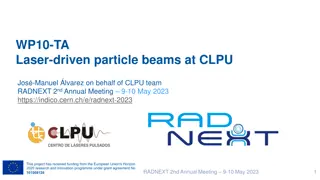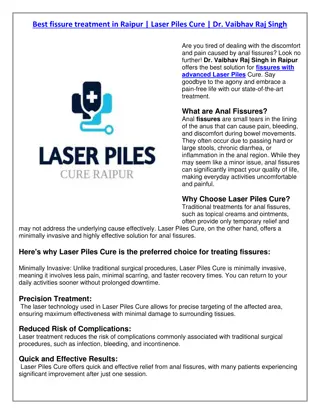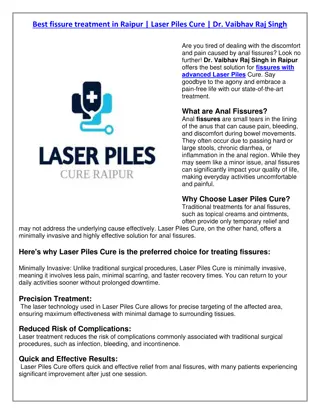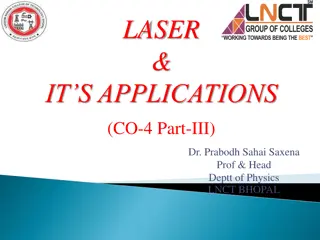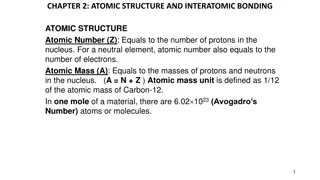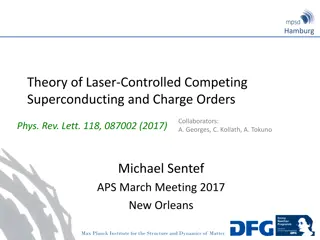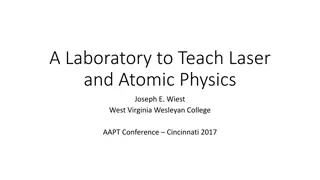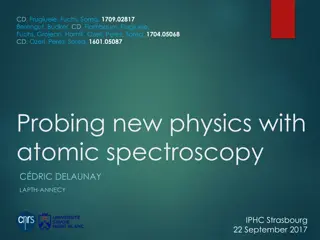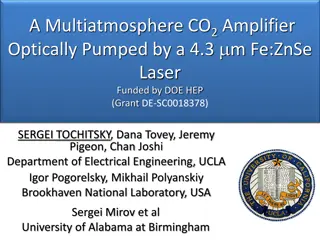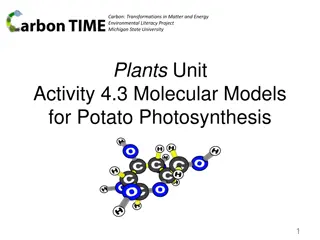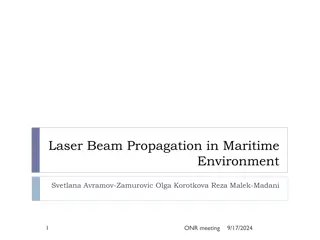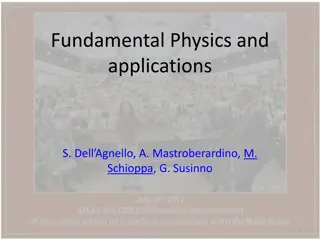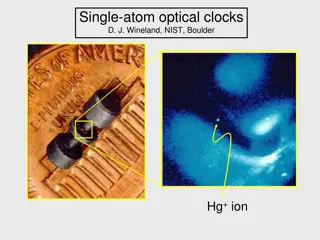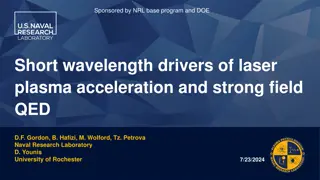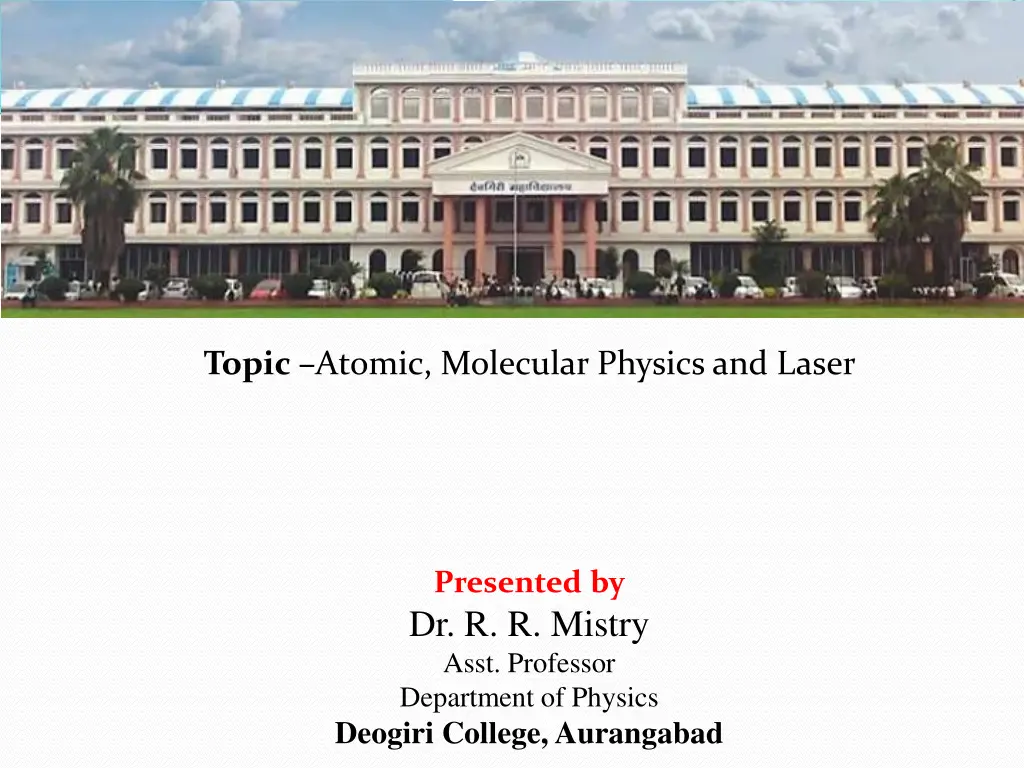
Exploring Atomic and Molecular Physics with Dr. R. R. Mistry: A Comprehensive Overview
Delve into the fascinating world of atomic, molecular physics, and laser technology with Dr. R. R. Mistry as he presents insightful discussions on the atom model, molecular spectra, and laser applications. Explore historical atomic models, quantum numbers, molecular structures, and the principles behind lasers. Gain a deeper understanding of topics such as the Thomson Atom Model, Vector Atom Model, and Laser Principles in this engaging academic journey.
Download Presentation

Please find below an Image/Link to download the presentation.
The content on the website is provided AS IS for your information and personal use only. It may not be sold, licensed, or shared on other websites without obtaining consent from the author. If you encounter any issues during the download, it is possible that the publisher has removed the file from their server.
You are allowed to download the files provided on this website for personal or commercial use, subject to the condition that they are used lawfully. All files are the property of their respective owners.
The content on the website is provided AS IS for your information and personal use only. It may not be sold, licensed, or shared on other websites without obtaining consent from the author.
E N D
Presentation Transcript
Topic Atomic, Molecular Physics and Laser Presented by Dr. R. R. Mistry Asst. Professor Department of Physics Deogiri College, Aurangabad
Chapter 1. The Atom Model Introduction, Thomson atom model, the Rutherford nuclear atom model, drawbacks of Rutherford atomic model, the Bohr s atom model, Bohr s theory of origin of spectral lines, diagrammatic representation of the series spectrum of the H-atom in the light of Bohr s theory.
Chapter 2. Vector Atom Model Introduction-vector atom model, Quantum numbers associated with the vector atom model, L-S coupling, J-J coupling, The Pauli s exclusion principle, Selection rules, Intensity rules, Interval rule, Normal Zeeman effect, Anomalous Zeeman effect, Stark effect and its experimental study.
Chapter 3. Molecular Spectra Introduction, origin of pure rotational spectrum of a molecule, vibration-rotation molecule, Rayleigh s law of scattering, Raman effect-Discovery, study, Applications molecular structure, Natural of liquids, Crystal physics, Nuclear physics, chemical effects. origin of a spectrum of experimental Raman of effect
Chapter 4. LASER Introduction, induced absorption, spontaneous emission, stimulated emission, population inversion, properties of laser beam, laser pumping, types of laser-Ruby laser, He-Ne laser, carbon dioxide (CO2) laser, Applications medical and industrial. of laser-Biological,
Chapter 1. The Atom Model:- Introduction:-There has been a variety of atomic models throughout history of atomic physics. The five basic atomic models, from which each one has somehow contributed to how we percept the structure of atom itself -1) Dalton s Billiard Ball Model, 2) J.J Thomson's "plum pudding" model, 3)Rutherford's Planetary model, 4)Bohr's Atomic model, 5)Electron Cloud Model/Quantum Mechanics Model.
Thomson Atom Model:- J.J Thomson was the first scientist to proposed a model forstructureof an atom. When J.J Thomson proposed his model of theatom, then only electrons and protons were known to be present in the atom. J.J Thomson's atom model also known as "plum pudding" model.
According to Thomson atom model 1) An atom consist of a sphere of positive charge with negatively charged electrons embedded in it. 2) The sphere of atomic radius which is of the orderof 10-10m. 3)The positive and negative charges in an atom are equal in magnitude, due to which an atom is electrically neutral. 4) The electrons are not at rest but it oscillate with definite frequencies about their mean position of rest.
5) The electrons are arranged inside the positive sphere that their mutual repulsion were exactly balanced by the force of attraction towards thecentreof the sphere. 6) In three electrons system the electron should be at the corners of the symmetrical placed equilateral triangle, the sides of which are equal to radius of sphere, proceeding in this way Thomson arranged electrons ranging from 1 to 100 inside the positive sphere.
7)Thomson atom model not only satisfied the requirements of the stability of the atom and the demands of electromagnetic theory but also explain to a certain extent the origin of the spectral line. 8)Thomson assumption about the uniform distribution of positive spherical of atomic dimensions was wrong. He was not explained the fine structure of spectral line. charges in a

